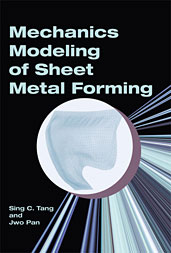Technical Paper
Trends on Simulation of Sheet Metal Forming Processes
2000-03-06
2000-01-1108
Present models and methods for simulations of sheet metal forming processes are reviewed in this paper. Because of rapid progress of computer hardware, complex computations, formerly impossible to perform due to high computational cost, are now feasible. Therefore, more realistic and computational intensive models are suggested for finite elements, materials, and frictional forces. Also, simulation methods suitable for sheet metal forming processes are recommended. Four numerical examples at the end of the paper are presented to support the recommendations.

